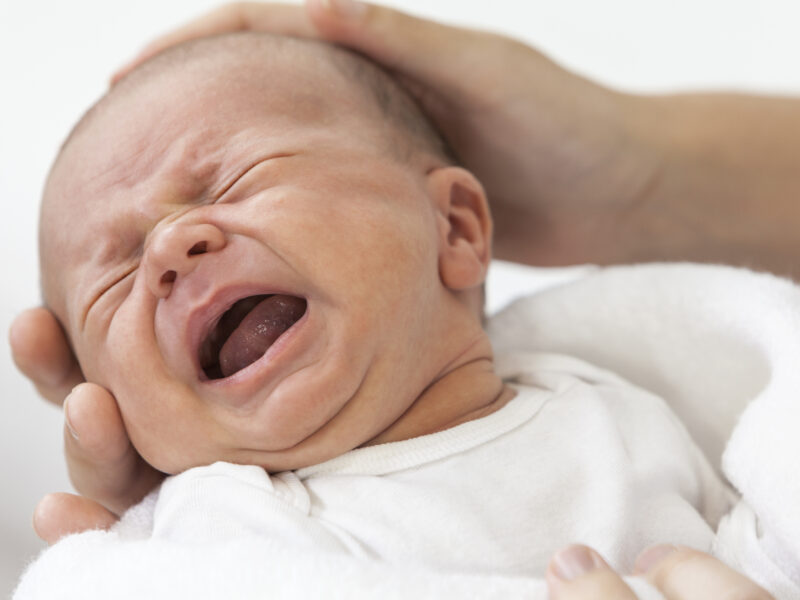Delays and Difficulties: Fecal Microbiota Transplants as Therapy
Delays and Difficulties: Fecal Microbiota Transplants as Therapy https://pediatricsnationwide.org/wp-content/themes/corpus/images/empty/thumbnail.jpg 150 150 Katie Brind'Amour, PhD, MS, CHES Katie Brind'Amour, PhD, MS, CHES https://pediatricsnationwide.org/wp-content/uploads/2021/03/Katie-B-portrait.gif- November 10, 2014
- Katie Brind'Amour, PhD, MS, CHES
Use of fecal microbiota transplantation to treat a wide range of disorders is in limbo while the FDA decides how to regulate the therapy.
Between 1997 and 2007, Clostridium difficile bacterial infections among U.S. children more than doubled and its mortality rate among all U.S. cases more than quadrupled. Clinicians are turning to a number of treatment options, including the use of fecal microbiota transplants, or FMT. The therapy reportedly has a 90 percent cure rate against C. diff, but some physicians claim that repeated regulatory changes by the U.S. Food and Drug Administration are hindering its use.
FMT is the transfer of fecal matter from one person to the gastrointestinal tract of another person to repopulate the recipient’s gut with healthy bacteria, helping the patient defeat C. diff, which causes debilitating diarrhea and recurs in up to 30 percent of patients. Despite the promise of the therapy, the risks are not insignificant and resemble those of blood transfusions. A transfer of infectious disease is certainly possible and, owing to the current paucity of knowledge regarding the short- and long-term effects of the bioactive constituents of stool, the potential risks of fecal transplants could theoretically be even greater.
In 2013, the FDA announced that an investigational new drug (IND) application would be necessary for any FMT, including in the treatment of recurrent C. diff. However, the FDA revised its decision following complaints that the rule was onerous and counterproductive. Although physicians can now use FMT to treat C. diffwithout the application, INDs are still required before FMT can be used for other illnesses.
“I understand why they’re wary,” says Jonathan M. Gisser, MD, a gastroenterologist at Nationwide Children’s Hospital. “Fecal transplant is like a bottle of pills with each capsule or dose being different — it’s a scenario the FDA has never had to deal with before.”
Dr. Gisser is one of many clinician-scientists who filled out an IND application for the FDA to treat pediatric cases of recurrent C. diff with FMT, only to learn it was no longer required. His team, along with more than a dozen others nationwide, has performed multiple colonoscopic fecal transplants for children with recurrent C. diff infections and is collecting data to measure the therapy’s effectiveness and study its risks.
“Our understanding of this therapy is in its infancy,” Dr. Gisser says. “It’s a double-edged sword, but I think you have to do enough of them to see what the risks truly are. Obviously, that has to be complemented with a good basic science understanding of the constituents of stool, which like any organ or any body fluid is tremendously complex.”
The use of FMT to treat an imbalance of gut bacteria first appeared in the scientific literature in 1958, when a team of physicians in Denver gave enemas of donor stool to four patients with pseudomembranous enterocolitis. Recipients responded dramatically to the treatment. The results led the study’s lead author, Ben Eiseman, MD, to theorize that the therapy helped reconstitute the correct balance of bacteria following multiple rounds of antibiotics for pseudomembranous enterocolitis, allowing the body to recover on its own.
Working off of similar theories, Dr. Gisser and colleagues performing pediatric FMT across the country are now working to build protocols for the procedure that maximize patient safety, standardize therapeutic impact and comply with current FDA regulations. But their success depends in part on concurrent improvement in the scientific community’s understanding of stool biology.
“There are a lot of substances in stool that could be very bioactive, not just in the short term but in the long term,” Dr. Gisser says. “The contents of fecal matter are influenced by your diet, your age, your geographical location. I think we need to figure out what the bioactive agents are in stool, define them better and then distill out the constituents of stool that are helping to treat conditions such as C. diff.”
Once this is achieved, Dr. Gisser says, FMT therapy could be standardized, synthesized or even customized to target gut dysbiosis caused by a variety of diseases, potentially making the therapy available to a much larger group of patients without the hassle of obtaining and screening donors.
In the meantime, however, patients eager to treat their own gastrointestinal infections and conditions, such as irritable bowel syndrome and inflammatory bowel diseases, have been taking matters into their own hands. Videos and how-to articles about at-home fecal transplants abound on the Internet. According to Dr. Gisser, these only serve to harm the advancement of FMT science and, potentially, the participants themselves.
“It puts FMT into the realm of folklore medicine. We aren’t going to learn anything from people performing enemas in their own homes,” says Dr. Gisser, whose team has developed a standard protocol for colonoscopic FMT. “It’s also irresponsible — they can’t adequately screen their donors and therefore have a greater risk of transmitting something to the recipient unwittingly. This therapy is very promising, but it could benefit from additional research.”
The FDA is now accepting public input on its guidelines for the use of FMT therapy against C. diff, which currently require fecal matter donors to be known to the patient or the physician. The FDA will likely need to develop a more comprehensive policy, Dr. Gisser says, as use of the therapy is explored for conditions such as IBS and Crohn’s disease.
References:
- Austin M, Mellow M, Tierney WM. Fecal microbiota transplantation in the treatment of Clostridium difficile infections. The American Journal of Medicine. 2014 Jun, 127(6):479-83.
- Committee on Infectious Diseases, American Academy of Pediatrics. Policy statement: Clostridium difficile infections in infants and children. Pediatrics. 2013 Jan 1, 131(1):196-200.
- Eiseman B, Silen W, Bascom GS, Kauvar AJ. Fecal enema as an adjunct in the treatment of pseudomembranous enterocolitis. Surgery. 1958 Nov, 44(5):854-9.
- Hohmann EL, Ananthakrishnan AN, Deshpande V. Case 25-2014: A 37-year-old man with ulcerative colitis and bloody diarrhea. The New England Journal of Medicine. 2014 Aug 14, 371:668-75.
- Redelings MD, Sorvillo FJ, Mascola L. Increase in Clostridium difficile-related mortality rates, United States, 1999-2004. Emerging Infectious Diseases. 2007 Sep, 13(9).
- U.S. Food and Drug Administration. Draft guidance for industry: Enforcement policy regarding investigational new drug requirements for use of fecal microbiota for transplantation to treat Clostridium difficile infection not responsive to standard therapies. U.S. Department of Health and Human Services, FDA.gov. Retrieved 2014 Aug 25.
- Youngster I, Sauk J, Pindar C, Wilson RG, et al. Fecal microbiota transplant for relapsing Clostridium difficile infection using a frozen inoculum from unrelated donors: a randomized, open-label, controlled pilot study. Clinical Infectious Diseases. 2014 Jun, 58(11):1515-22.
About the author
Katherine (Katie) Brind’Amour is a freelance medical and health science writer based in Pennsylvania. She has written about nearly every therapeutic area for patients, doctors and the general public. Dr. Brind’Amour specializes in health literacy and patient education. She completed her BS and MS degrees in Biology at Arizona State University and her PhD in Health Services Management and Policy at The Ohio State University. She is a Certified Health Education Specialist and is interested in health promotion via health programs and the communication of medical information.
-
Katie Brind'Amour, PhD, MS, CHEShttps://pediatricsnationwide.org/author/katie-brindamour-phd-ms-ches/April 27, 2014
-
Katie Brind'Amour, PhD, MS, CHEShttps://pediatricsnationwide.org/author/katie-brindamour-phd-ms-ches/April 27, 2014
-
Katie Brind'Amour, PhD, MS, CHEShttps://pediatricsnationwide.org/author/katie-brindamour-phd-ms-ches/April 27, 2014
-
Katie Brind'Amour, PhD, MS, CHEShttps://pediatricsnationwide.org/author/katie-brindamour-phd-ms-ches/April 28, 2014
- Post Tags:
- Gastroenterology
- Posted In:
- In Brief







